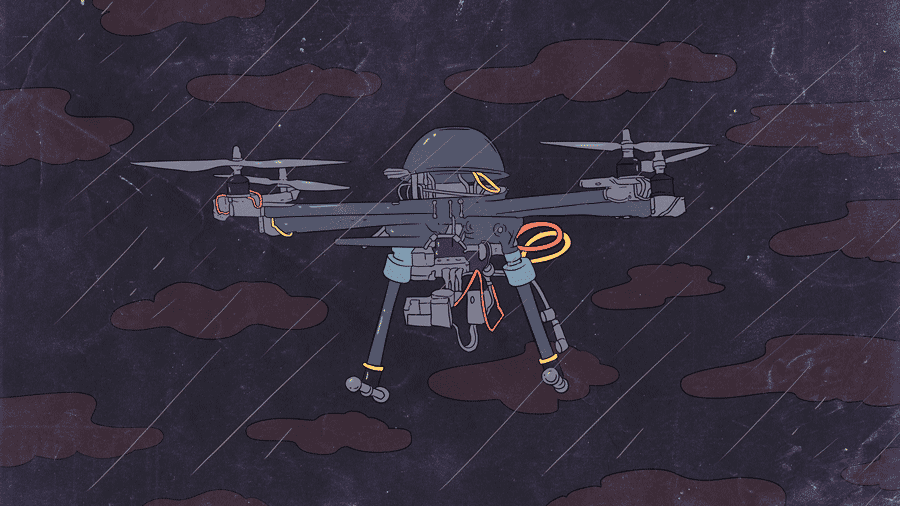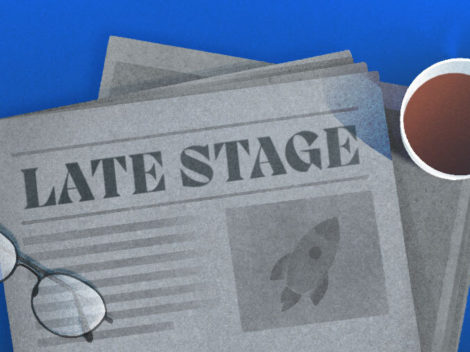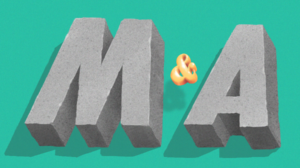When news that Hurricane Harvey was set to pound the Gulf Coast, I was initially skeptical of its potential damage. There had been many false alarms in the past, so one never knew if a storm would end up being devastating or practically harmless.
Although I am based in Austin now, I lived in Houston for 14 years. I experienced Hurricane Ike firsthand. I met my husband there. Got married there. Gave birth to my first child there. It will always hold a special place in my heart.
Follow Crunchbase News on Twitter & Facebook
So of course my husband and I were riveted to news reports of what was happening in our old hometown. We still had family and friends there, and it pained us to watch helplessly as the rains pummeled the city for days and inflicted all sorts of damage.
Needless to say, the impact of the storm was far worse than we – or anyone, really – expected. My heart and stomach hurt as I saw friends post pictures on social media of their homes being flooded with several feet of water. And although the hurricane was devastating, it was heartwarming that people put their differences aside and helped each other.
-

Houstonian JP Leite standing on top of his flooded car in the wake of Hurricane Harvey. His home in West Houston was flooded with five feet of water. Photo Credit: Nikki Leite
I also couldn’t help but observe how the use of technology played a huge role in rescue and recovery efforts. I heard story after story of people using social media, open data, creative software development, drones, and a slew of different apps to help find shelter, navigate through the heavy rains and flooded roads, and simply let people know they needed help. This wasn’t possible in hurricanes past, and it’s possible that contributed to the lower death toll compared to other storms. (As of Sept. 6, reports pegged the number of deaths at around 70 in Houston. For context, in 2005, Hurricane Katrina claimed more than 1,800 lives.)
To highlight the extreme ingenuity of both our fellow humans, and what tech can do in times of crisis, I set about compiling unique ways technology came into play during Hurricane Harvey.
Websites And Textbots
A trio of Houston-area software developers quickly recognized that 911 was not equipped to handle all the calls for rescue. So Matthew Marchetti, Nate Larson, and Oliver Carter put together a critical rescue system called Houston Harvey Rescue in under three hours. The site led to more than 7,600 active rescues, according to the developers.
The site was created in the middle of chaotic conditions, Marchetti told Crunchbase News. So now the trio is trying to tweak it and apply it to what could happen as a result of Hurricane Irma.
“It all started out from a feeling of helplessness as I realized that a lot of requests for rescues were life-threatening, such as diabetics running out of insulin, or a person on a ventilator running out of power,” said Marchetti, whose office, home, and car all flooded. “I went out in boats and rescued a couple of people but still felt so helpless. For me, as a data engineer, I saw all these people asking for help and others offering it. So we made a map to match those people together and crowd source the operation.”
Meanwhile, Houston-based Sketch City – which describes itself as an open, non-profit community of technology advocates and volunteers – took crowdsourced information and built a map of emergency shelters and shelters’ needs for volunteers and supplies. It teamed up with Austinite Elise Graham, head of product design at Olivia AI, to create Texas Rescue Map. With the help of Code for America volunteers, Sketch City also created Harvey Needs to connect victims with resources. Another member of the organization, Nile Dixon, developed an SMS textbot to assist people in locating the nearest hurricane shelter to them.
Sketch City continues to help in the aftermath of the storm. The group helped create Muck Map, an app that connects homeowners to volunteers who can help clear out materials from flooded homes.
Jeff Reichman, founder of Sketch City, is realistic about the long-term impacts of Hurricane Harvey.
“Everybody knows somebody who lost everything,” he said. “It’s going to be a long recovery.”
Drones
Oklahoma City-based Vigilant Aerospace is a tech startup that has exclusively licensed NASA’s situational awareness and detect-and-avoid system for unmanned aircraft. Using the NASA technology, the startup developed a product called FlightHorizon. The system tracks a pilot’s drone and provides alerts, warnings, and avoidance commands to prevent collisions with other aircraft.
Last week, members of the Vigilant Aerospace team traveled to Houston to bring its system to a group of unmanned aircraft pilots. To aid the relief efforts, the company assisted in documenting the damage caused by Harvey.
“We attached a transponder to their primary drone and trained them to use the system to monitor their drone and the surrounding airspace,” wrote Kraettli Epperson, CEO of Vigilant Aerospace, via email. “We believe that drones can and should play a critical role in disaster response because they provide immediate access to better data, mapping, and situational awareness in a way that is safer, faster, and less costly than other methods of assessment, including the use of manned aircraft.”
-

The system installed on one of the disaster response drones used during Hurricane Harvey. Photo credit: Kraettli Epperson
Apps
Zello, a free push-to-talk applications for [devices], drove media attention for its heavy usage during the storm. The app, which basically serves as a walkie-talkie, made it easier to get supplies and work crews routed to places in most need, noted volunteer Alisha Davis. It was also used by Louisiana’s Cajun Navy (a group of volunteers with boats) to find people who needed rescuing.
Bill Moore, CEO of Austin-based Zello, said there was a twenty-fold increase in new users in the Houston area during and after the storm. He estimates that there were hundreds of thousands of users alone last week.
“The fact that it’s live voice makes it ideal for communicating during a crisis,” he said. “Plus, it’s reliable and can be used on a variety of devices… In general, though, in large part thanks to a massive volunteer effort, it’s remarkable how little loss of life there was given the scale of the disaster.”
Other apps proved useful for people during the storm. Shell International geologist Tony Salem was in New Orleans when Harvey hit. When he and a group of people decided to go back to Houston, they relied on the Waze navigation app to help them avoid the storm-ravaged areas.
“It was very handy, particularly when it came to smaller roads,” Salem said. “It was constantly updating as we were using the app so we could avoid road closures as much as possible.”
On the way back into the city, they also used Storm in an effort to drive on drier roads.
While it still took them about 12 hours – twice as long as “normal” – Salem believes it would have been even worse without the technology.
Open Data
The City of Houston says it worked with partners at Harris County to make timely information available to the public before, during, and after the storm through a number of open data feeds. As emergencies developed around the city, Houstonians and residents of surrounding areas could use open data to track rising water levels, see which evacuation routes were still passable, and find nearby open Red Cross shelters.
As the storm subsided, public agencies provided open data about where floodwaters were receding, the status of city services, a power outage tracker, and what transit routes were resuming service. The city said it also worked with Sketch City to help put open data to immediate use, creating useful tools for residents displaced by the flood.
Social Media
There are countless stories of how social media applications such as Nextdoor, Facebook, and Twitter helped people communicate with others about their needs and helped in rescue efforts so I won’t get into them all here.
In one case, I heard about a woman in Houston with spina bifida who requires an electric wheelchair for mobility. As her house started flooding, 911 declined to help her until her house had a foot of water. Her wheelchair, however, could not operate in more than a half foot of water. As told to me by her friend, Julie Craig Whitmore, the woman took to Facebook with her plight and within a matter of hours of friends posting and reposting asking for boats and any help, she was rescued. Another Houstonian, Christine Norwood, told Crunchbase News she is using Sign Up Genius to help people not affected by the storm to adopt neighbors with flooded homes. She’s also using social media to coordinate meals for those with flooded homes.
Nicholas Adams, president of Silicon Valley-based NINICO Communications, points out that Facebook had just launched the year before Hurricane Katrina hit in 2005. At that time, there was no Twitter and smartphone technology was still in its infancy.
Today, he says, social media has become a legitimate resource in the case of large disasters.
“As human beings, in times of despair, we reach out,” he told Crunchbase News. “Technology has made it so that we have a lifeline when we need it most. From separated family members trying to reconnect with loved ones to first responders searching for people in trapped spaces, the use of technology and social media comes to the rescue in so many cases.”
While there’s no way technology can make up for all the losses suffered by people as a result of Hurricane Harvey, there’s no doubt that it did help in rescue and aid efforts. Here’s to hoping that it doesn’t need to come into play as much for Hurricane Irma.
Illustration: Li-Anne Dias

Stay up to date with recent funding rounds, acquisitions, and more with the Crunchbase Daily.













67.1K Followers